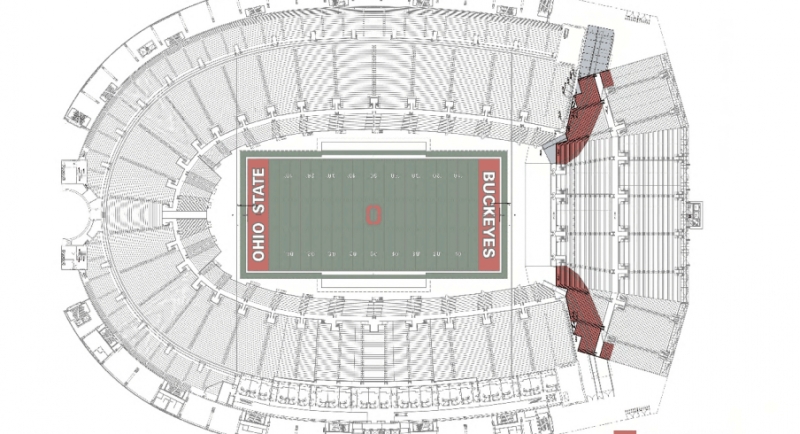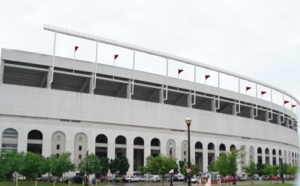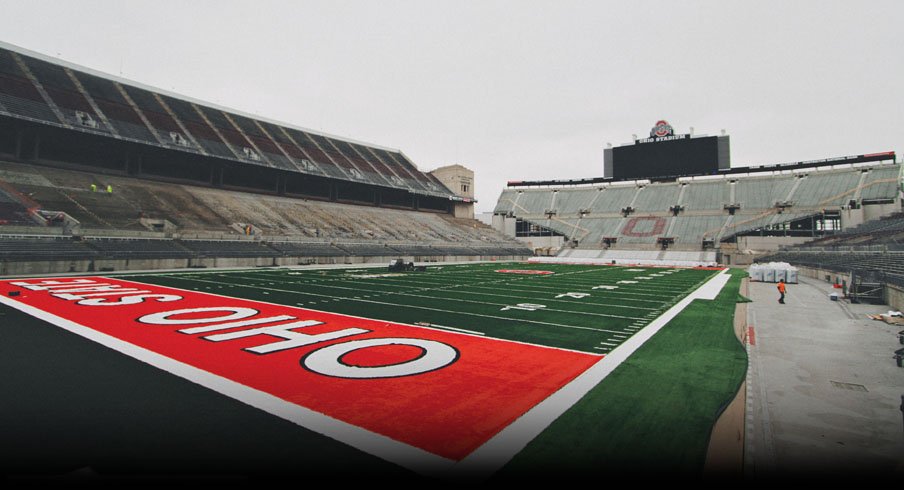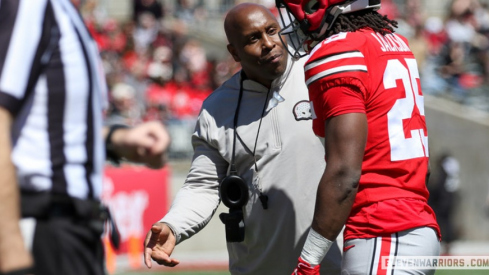Entering its 93rd year of hosting Buckeye football, the landmark on the banks of the Olentangy River at 411 Woody Hayes Drive has undergone a fresh batch of renovations.
At price tag of $13.7 million, Ohio Stadium is set to kickoff the 2014 season with new field turf, nearly 2,600 additional seats and permanent lights.
The new playing surface is simply a replacement of the previous, excepting the recycling of the rubber pellets from the old version, with the end zone designs and colors remaining unchanged.
Replacing rented temporary lighting structures will create more flexibility for scheduling changes, eventually generate a new revenue steam by allowing OSU to host more community events, add a few parking spots and improve traffic flow in the lot.
A common misconception is that the upgrade will save the school from paying the roughly $80,000 tab for temporary lighting. In reality, that cost is picked up by the television networks though the cost is subtracted from the pie of revenue B1G teams split annually.
While the permanent lighting is a welcome change, it's the extra space in the south stands installed to handle student ticket demands that have created the most buzz.

With the addition, the Ohio Stadium's capacity jumps to 104,944 making it the 4th largest on-campus facility in the country. To its credit, the university added seating while preserving the famous horseshoe shape by allowing a 12-15 foot gap between the southeast and southwest corners of the south stands and the rest of the stadium. Those two openings, while shrunken, will still serve as the tunnels in which teams access the locker rooms.
Finally, Ohio State invested in concrete waterproofing in an effort to protect original portions of the structure that is closing in on a century of hosting Buckeye football.
At a cost of $1.3 million raised mostly through private donations with construction starting in 1920, Ohio Stadium was originally built as a 66,000 seat structure though 71,138 packed The House That Harley Built on its dedication way back on October 21, 1922.
The Shoe underwent minimal change over the next eight decades with the exceptions of the installation of artificial turf in 1972, a new scoreboard atop the south stands in 1984, and the return of natural grass in 1990.

In 1999, Ohio Stadium underwent its most seismic renovation to date – a three-year project completed before the 2001 season opener – at a cost of $194 million. Much of the cost was offset by fees generated via the installation of hospitality suites and club seating.
That wasn't the only major modification as Ohio State opted to remove the track ringing the field, paving the way for a lowering of the playing field and an ability to install more premium seating. The south stands also became a permanent structure with a brand new scoreboard attached though it was eventually replaced before the start of the 2012 season.
With the latest round of renovations complete, Ohio State fans will have to wait until September 6th – when the Buckeyes welcome Virginia Tech to Ohio Stadium – for the opportunity to try on their new Shoe.



